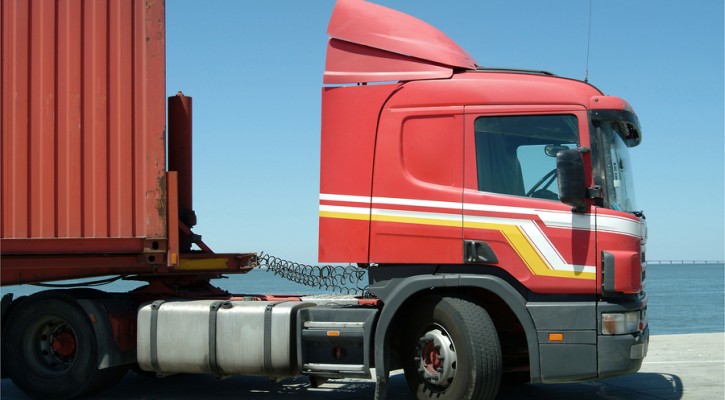Complexity of Trucker Crashes
April 3, 2014
There has been a lot of focus on HOS (Hours of Service) and EOBR (Electronic On Board Recorders), both legislative acts aimed at reducing driver fatigue. However, fatigue is not the only, or even the biggest, cause of commercial vehicle accidents. In fact, the Department of Transportation (DOT) found that fatigue accounted for crashes just 1.4% of the time, and 60% of the time no driver was at fault. So, what other factors are we not considering here?
Well, here’s a quick list of crash causes found by the DOT:
Poor vehicle maintenance. This can lead to issues such as tire blowouts, brake problems, engine failures, etc.
Poor training. While most drivers have received training, there is no national standard for entry-level training. Many crashes are caused by improper truck maneuvering, such as turning and passing through intersections.
Other drivers. As distracted driving and cell phone use become a larger issue, truckers have to share the road with more and more bad drivers.
Road debris. Objects on the road can cause drivers to swerve or get a flat tire.
Poor road maintenance. Road damage such as potholes can damage tires and shocks, as well as shift cargo.
Shifting cargo. This can cause changes in weight distribution and driving dynamics.
Vehicles stopped on the road. Whether a car has broken down, an accident has occurred or traffic has suddenly come to a stop, commercial truck drivers caught off guard may not have enough time or distance to bring their big rig to a stop.
While there are a lot of reasons for truck driver crashes, as well as a lot of legislation attempting to prevent commercial vehicle crashes, the reality is that we all just need to drive safer and saner. Keeping a safe distance, respecting other vehicles on the road, avoiding distractions, resisting road rage and following all the traffic laws in place will help make our national highway system safer.
Employers Advocating Safe Drivers
April 3, 2014
There has been a lot of research done on truck driver safety, plenty of federal regulations, as well as a few interesting studies on the costs and benefits to employers who ensure the safety of their drivers. As a result, many companies are making changes to their business practices that benefit drivers and the public at large.
In an article written after a deadly crash in Kansas, local trucker Wesley Smith explained, “Every month we keep up to date on our safety and the company’s really good about not making us get in a hurry, you know, when you’re tired, take a break, pull over, rest, don’t be out there endangering anybody.”
In the past, business owners have been known to pressure drivers into working over hours and pushing them to deliver loads with tight deadlines. However, there are now both federal laws and financial incentives for safer driving standards, resulting in a welcome change of employer mentality.

Trucking History
April 3, 2014
For a very long time, the government has been attempting to make the trucking industry safer. This timeline made available by the Land Line Mag shows how various efforts have been made on the federal level:
http://www.landlinemag.com/Story.aspx?StoryID=26797#.Uz3H41WzKpg
OOIDA Agenda
April 2, 2014
As the new highway bill is being developed in congress, the OOIDA is encouraging truckers to contact their representatives to push for legislation that would make our highways safer.
The OOIDA agenda includes four main points:
1. Training new truckers and building experience for safety.
2. Highway safety infrastructure, truck parking and driver education
3. Enforcement efforts that encourage safe driving
4. Addressing crashworthiness
For more information on the OOIDA agenda, news, and social media, visit http://www.truckersforsafety.com/.

Story of a True Hero
April 2, 2014
This California trucker was named Goodyear’s 31st Highway hero for bravely rescuing an unconscious truck driver from a burning tanker. See the full story here:
http://www.tirereview.com/Article/125449/goodyear_names_california_trucker_as_31st_highway_hero.aspx
Trucker Shortage
April 1, 2014
For the last few years, we have seen a dramatic trucker shortage. Why? Well, there are many reasons – far too many reasons – but we’ll just go ahead and focus on a few of them right now:
- First of all, the baby boomers are retiring. The trucker population is made up of aging drivers who are ready to retire and enjoy their golden years.
- Younger drivers are becoming discouraged. The trucking industry has a reputation for rough, cowboy-spirited outlaws that don’t like to follow the rules and are fiercely independent. As a result, the profession tends to attract less-than-professional drivers who think they can get away with drinking and smoking, breaking the law, and driving recklessly. At the same time, increased supervision, drug tests, background checks and law enforcement are cracking down on these young rule-breakers and forcing many drivers out of the industry.
- Increased regulation is causing seasoned drivers as well as new recruits to become disgruntled, even if they are the stand-up, law-abiding type. New laws are placing a greater burden on drivers, and as a result, many truckers are facing fines for things that are out of their control. For example, it’s just about impossible to avoid driving over hours when there is no parking available, or driving over the weight limit when the supplier has no scale available.
- Working conditions are another part of the equation. Low pay, tough schedules, poorly maintained vehicles, bad bosses and generally difficult working conditions are causing many to leave the profession.
- Finally, fracking is becoming a major factor. The energy boom has consumed what is left of the trucking industry and increased the effects of the driver shortage.
These are all important issues to think about for the next generation of truckers. If you are about to join a truck driving school, then be sure to discuss these problems with your instructors, future employers and industry leaders. At least with this current lack of truck drivers, you’re sure to be able to find a job, and maybe even negotiate higher pay and better working conditions.

Heroic Skills
April 1, 2014
When this truck driver noticed that his brakes had failed, he made a move of heroic professionalism that helped prevent disaster. Truckers have to deal with these types dangers every day, so anytime this kind of driving excellence gets the publicity it deserves, you can bet we will be posting about it! See the full story here:

Trucking 8th Deadliest Occupation
March 31, 2014
The trucking industry has seen a drop in fatalities. Great news! However, trucking is still a member of the top ten deadliest occupations, ranking in at #8 behind power line workers.
So, what does this mean? Well, in 2012 there were a total of 741 drivers killed on the job, and the truck driver fatality rate was 6X the national average. Considering all the hazards of long hours, constant travel, distracted drivers, inclement weather and unhealthy food options, it’s no wonder that truckers have a high ranking on the deadly occupations list. However, new local policies are cracking down on distracted driving, especially texting while driving, and new regulations in the trucking industry may help alleviate some of these dangers.

Port Truck Drivers Making Less
March 31, 2014
How and why are many of our port truck drivers making the same hourly wages as fast food workers? CNN Money looks into the issue:
http://money.cnn.com/2014/02/19/news/economy/port-truck-drivers-wages/
